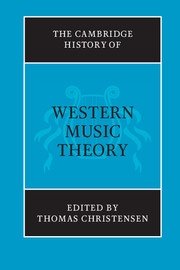Book contents
28 - Form
from A - Models of music analysis
Published online by Cambridge University Press: 28 March 2008
Summary
This chapter will trace some of the major strands of a tradition of musical thought that reaches from the late eighteenth century to our own time: the analysis of large-scale tonal form. Whereas a fascination with formal analysis undertaken purely for its own sake is mostly a twentieth-century phenomenon, the emphasis on form has been a central preoccupation of music-theoretical writings ever since the “work concept” (consolidated around 1800) decisively shifted theoretical focus to whole works of music and thus to overall form. As notions of organic musical process became more prevalent, musical form became less self-evident, more in need of elucidation. Mainstream music criticism in the early nineteenth century was increasingly characterized by intuitive professions of aesthetic unity (the urge to demonstrate such unity analytically was only faintly in evidence at first); this trend was of a piece with a romanticized view of the creative artist as a second Creator, whose unifying spirit was thought to hover over the great variety that could now be brought together within the selfsame work. In short, form became more than a matter of conventional arrangement: it was the extensive manifestation and discernible logic of the creative imagination.
At the same time, the pedagogical context of music-theoretical writing broadened: the Satzlehre tradition became that of the Kompositionslehre, as theoretical treatises were now concerned with promoting the composition of entire pieces in the available forms. The analysis of musical forms began in this context as a pedagogical exercise in emulation, and the works of Haydn, Mozart, and Beethoven were increasingly held up as exemplary.
- Type
- Chapter
- Information
- The Cambridge History of Western Music Theory , pp. 880 - 906Publisher: Cambridge University PressPrint publication year: 2002
References
- 43
- Cited by



